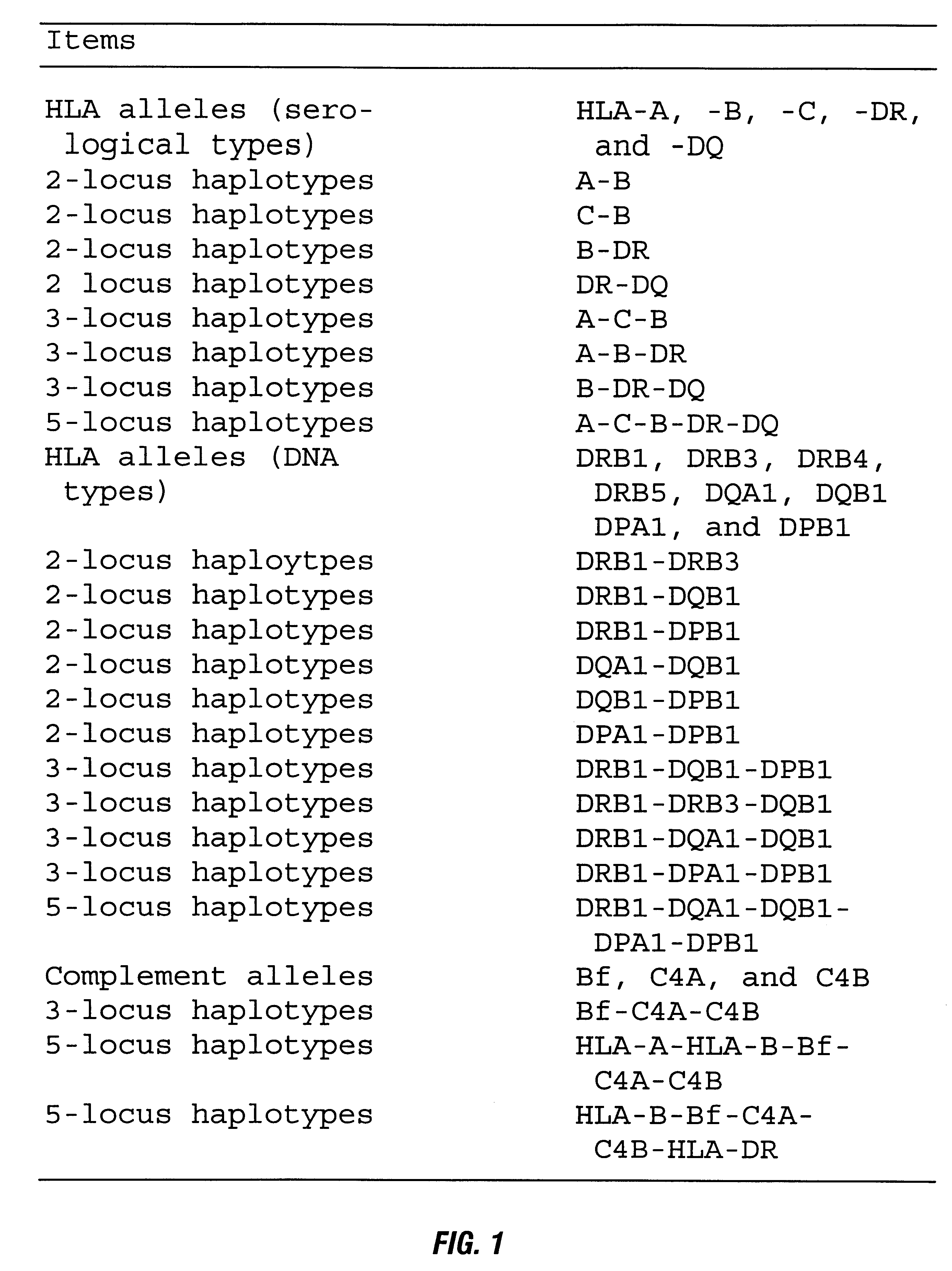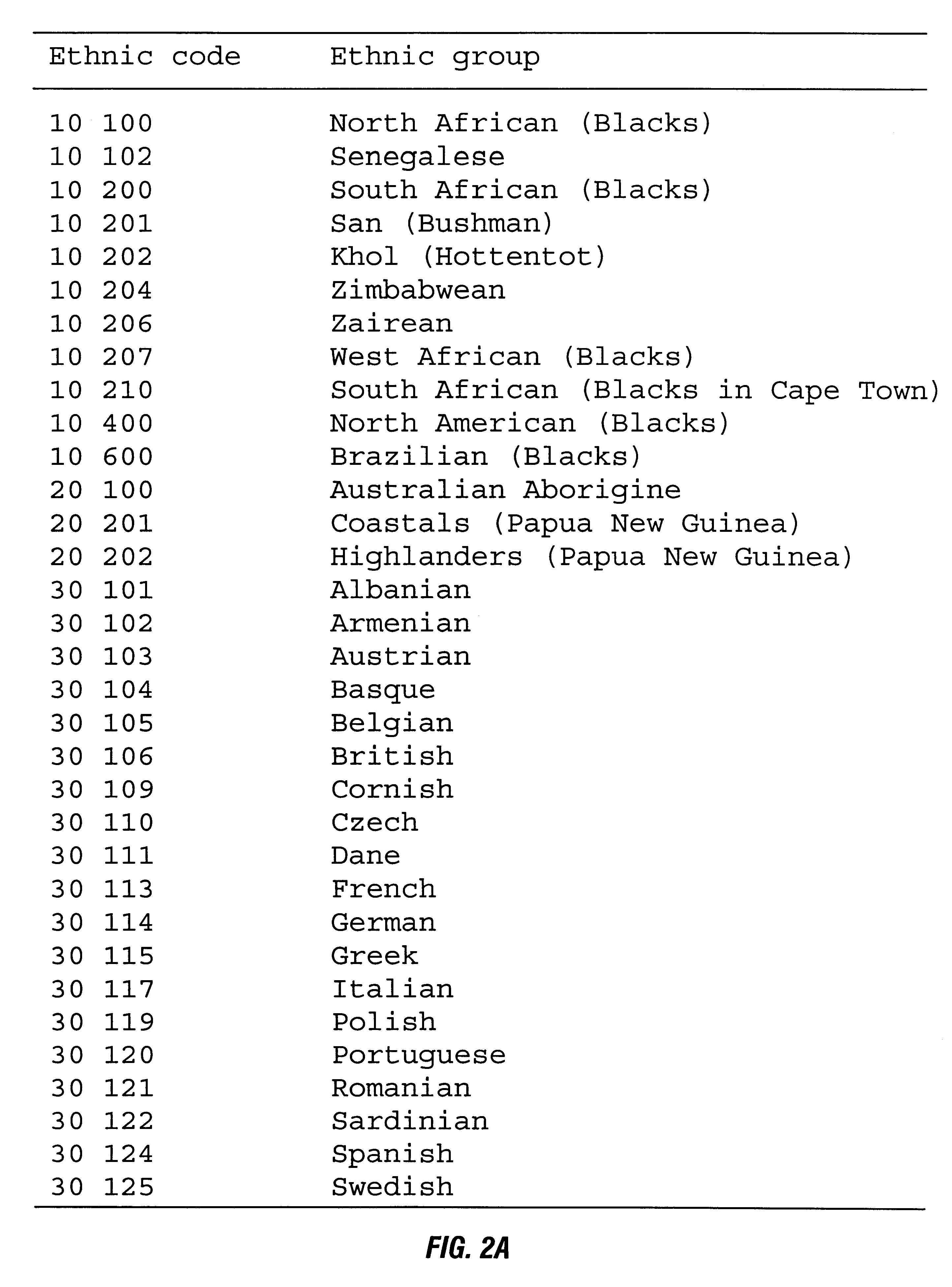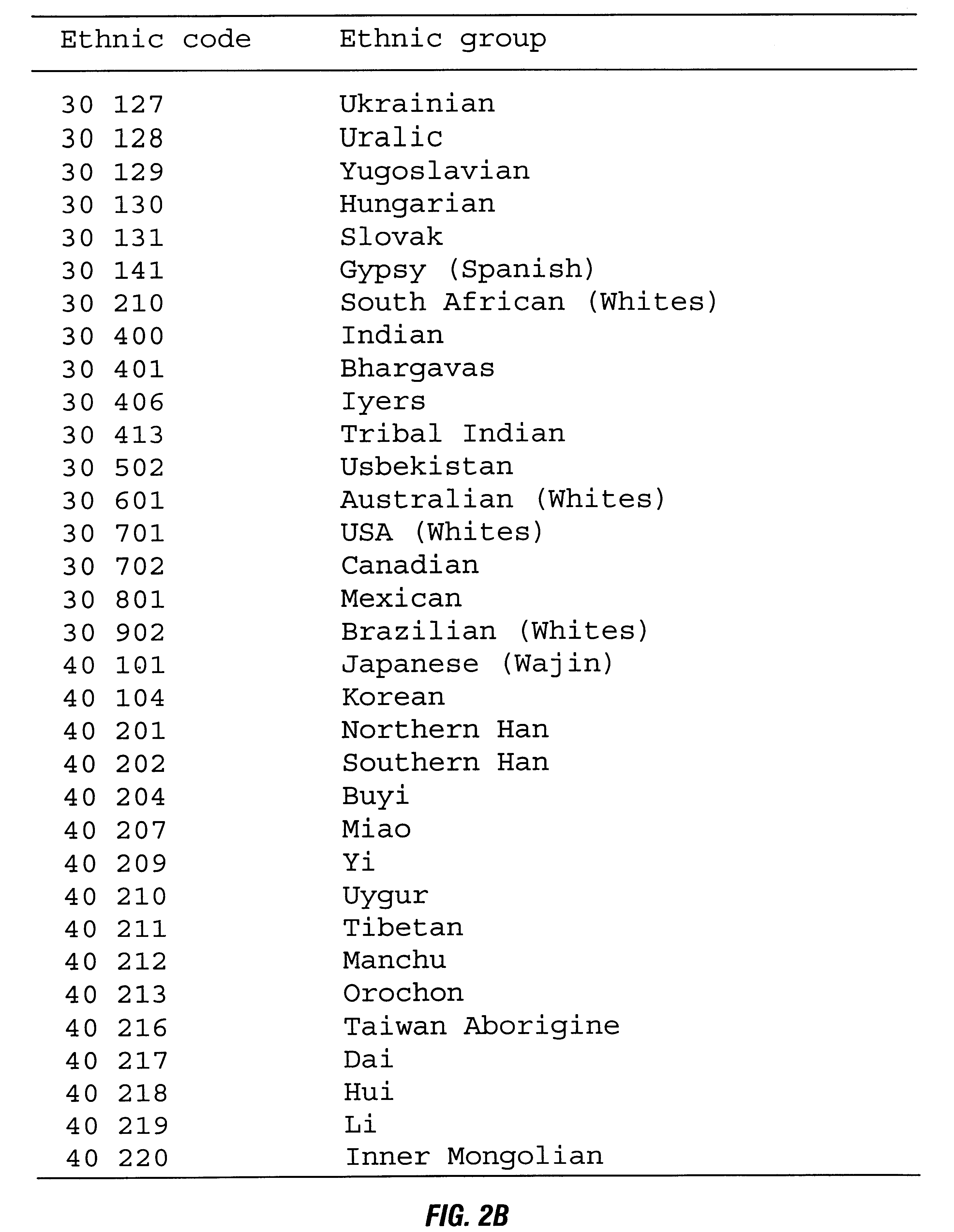A pluripotent vaccine against enveloped viruses
- Summary
- Abstract
- Description
- Claims
- Application Information
AI Technical Summary
Benefits of technology
Problems solved by technology
Method used
Image
Examples
example 1
The active specific immunotherapy protocol involves immunization of subjects with irradiated whole cell MCV. MCV consists of three human melanoma cell lines (M-10VACC, M-24VACC, and M-101VACC), which were selected from a series of melanoma cell lines after careful examination for the high expression of melanoma associated antigens, grown and prepared for administration as described in Hoon et al. (1990), incorporated herein by reference.
The HLA types of the three cell lines in the MCV are given in Table V. It will be noted that the cross reacting alleles for the A locus are likely to be present in 120% of the caucasian population and for the B locus 70% of the population.
An outside laboratory screened the MCV for viral (HIV, hepatitis), bacterial and fungal infectious organisms. Equal amounts of each line were pooled to a total of 24.times.10.sup.6 cells in serum-free medium containing 10% dimethyl sulfoxide and cryopreserved in liquid nitrogen. After cryopreser...
example 2
Induction of Antibodies Reactive with Influenza A and B
We have tested the coded sera from patients immunized with this MCV for antibodies reactive in a blinded ELISA assay with influenza A and influenza B using the preimmunization sera as a control. The data are summarized in Table I. We have found that 81 % of the patients after immunization with MCV showed increased serological reactivity by ELISA to influenza A of at least 0.5 antigen units and 38% had similar increased serologic activity to influenza B. This increased activity is believed secondary to cross-reacting cellular antigens in MCV.
TABLE I Induction of Antibodies Reactive with Influenza A and B PATIENT ELISA UNITS INITIALS BLEED DATE INFLUENZA A INFLUENZA B D. D. 10 / 15 / 92 1.78 4.86 D. D. 11 / 16 / 92 2.84 6.56 D. D. 12 / 21 / 92 3.67 6.89 R. S. 07 / 27 / 94 2.1 2.99 R. S. 08 / 25 / 94 3.0 2.72 R. S. 09 / 29 / 94 3.16 2.72 R. K. 03 / 23 / 88 5.39 5.89 R. K. 05 / 05 / 88 6.95 8.05 R. K. 08 / 25 / 88 5.74 6.73 C. G. 08 / 03 / 94 4.62 9.09 C. G. 09 / 15 / 94 8.10...
example 3
Induction of Cytotoxic Antibodies Reactive with Cell Surface Antigens on the Surface of Peripheral Blood Lymphocytes Taken from a Panel of 106 Normal Donors
The sera from 10 of the 16 immunized patients formed sufficient titers of antibodies to induce cytotoxicity to allogenic lymphocytes from at least 20% of the test population of 116 normal lymphocyte donors (Table II) when tested by a standard Terasaki assay for cytotoxic antibodies. Six of the 16 individuals or 38% formed antibodies that were cytotoxic to >50% of the normal donor lymphocyte population. The frequency of cytotoxic antibodies varied from 20% to 97% against lymphocytes from individuals in the test panel.
Thus, in summary, it is clear that immunization with MCV was successful in inducing antibodies reactive with cellular antigens present on influenza A and B viruses by ELISA and capable of inducing lysis of allogenic lymphocytes in 63% of immunized subjects. These same antibodies which were capable of causing lysis of ...
PUM
| Property | Measurement | Unit |
|---|---|---|
| Fraction | aaaaa | aaaaa |
| Fraction | aaaaa | aaaaa |
| Fraction | aaaaa | aaaaa |
Abstract
Description
Claims
Application Information
 Login to View More
Login to View More - R&D
- Intellectual Property
- Life Sciences
- Materials
- Tech Scout
- Unparalleled Data Quality
- Higher Quality Content
- 60% Fewer Hallucinations
Browse by: Latest US Patents, China's latest patents, Technical Efficacy Thesaurus, Application Domain, Technology Topic, Popular Technical Reports.
© 2025 PatSnap. All rights reserved.Legal|Privacy policy|Modern Slavery Act Transparency Statement|Sitemap|About US| Contact US: help@patsnap.com



